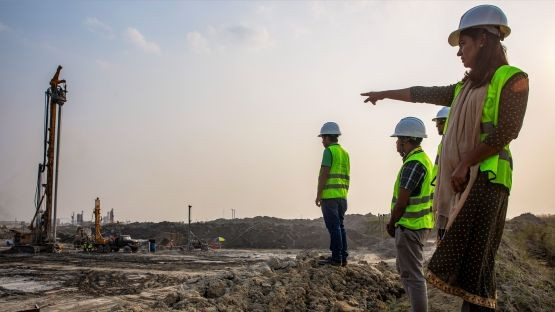Russia, India May Cooperate To Build Nuclear Plants In Middle East, Africa

KEY POINTS
- Russia, India are working to help Bangladesh construct its first nuclear power plant
- The first joint India-Russia nuclear power plant was built in 2002 in Tamil Nadu, India
- India agreed to have Russia design 20 more nuclear units in India over the next 20 years
Russia and India could potentially form a partnership to build nuclear power plants across Africa and the Middle East.
“There are also good prospects for cooperation of Russia and India in nuclear energy in third [party] countries,” said Indian Ambassador to Russia Venkatesh Varma.
Varma noted that Russia and India have already been working together to help Bangladesh construct its first nuclear power plant, called Rooppur.
“Now Russia is also pretty active in the construction of nuclear power plants in the Middle East and Africa. That opens a new pathway of cooperation for us,” Varma added. “Russia already has agreements in this field with a number of African countries. Ethiopia is one of them, and there are some countries in the Middle East. It will be Russian projects but with Indian cooperation. The discussions are still at a preliminary stage, but we hope that this will be a new area of cooperation. It is related to the success of the Indo-Russian cooperation in Bangladesh.”
The Bangladesh nuclear plant is being built by Russia’s Rosatom State Atomic Energy Corp. (with help from Indian agencies) at a cost of more than $13 billion.
The first two units at Rooppur are scheduled for commissioning in 2023, while another unit is expected to begin operations the following year.
The first joint India-Russia nuclear power plant was constructed in 2002 in the southern Indian state of Tamil Nadu, Kudankulam, which is now the largest nuclear power station in India.
In 2008, Moscow and Delhi agreed to construct four additional units at Kudankulam and to develop new atomic sites. In addition, last September India agreed to have Russia design 20 more nuclear units in India over the next 20 years.
The nuclear plant in Bangladesh is designed to provide universal electricity access for the country’s 160 million people. Only half of them had electricity a mere ten years ago.
“It’s a whole social transformation,” said Tawfiq-e-Elahi Chowdhury, special advisor on energy to Bangladesh prime minister Sheikh Hasina.
A Bangladeshi businessman named Kazi Zahin Hasan thinks nuclear power will help the country’s economy and provide a safer alternative to fossil fuel-driven power. He also dismissed solar and wind energy.
“Modern cities need continuous power; solar and wind cannot provide this without expensive battery storage, which no city or utility has been willing to buy,” he wrote. “That’s why after billions of dollars of investment in solar and wind power, there is not a single major city which is powered exclusively by solar or wind. Most utilities which have invested in solar or wind power use fossil fuel power as backup. That’s why big investments in solar and wind power have not significantly reduced emissions of [carbon dioxide].”
While he conceded that hydro-power is a good source of clean energy, Hasan pointed out such plants require the construction of large dams and the flooding of wide areas. “This is politically impossible in any densely-populated country,” Hasan wrote.
Nuclear power, he asserted, is the only non-fossil energy which can “easily be scaled up” to replace fossil fuels.
In addressing the risks related to nuclear power, as in the well known disasters at Chernobyl and Fukushima, Hasan pointed out these facilities used water-cooled reactors and accidents were caused by “failures in the circulation of coolant, which caused the reactor core to overheat and melt down.”
Hasan proposes that reactors using liquid sodium as a coolant would prevent such deadly mishaps.
“The use of liquid sodium as a coolant has huge advantages; reactors cooled with water must be operated under very high pressure, and overheating of the water coolant can cause a high-pressure steam explosion (which happened at Chernobyl),” he wrote. “Liquid sodium coolant does not have to be pressurized. As the reactor vessel does not have to withstand high pressure, it can be designed to expand thermally if temperature goes up.”
Hasan noted that both Russia and China have commissioned sodium-cooled reactors in recent years.
“Russia and China are leading the way; tomorrow’s nuclear plants will be sodium-cooled plants which will not melt down, and which will gradually use up existing stocks of radioactive waste,” he wrote.
© Copyright IBTimes 2025. All rights reserved.





















